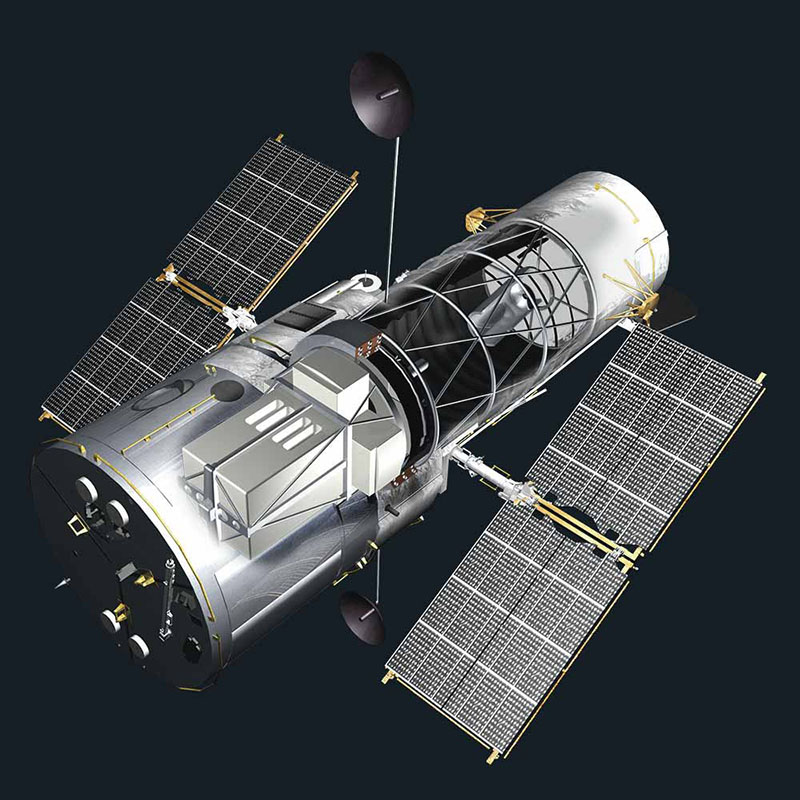History
Although the Hubble Space Telescope has been in orbit since 1990, its origins date long before that. The first serious concepts of a space-based optical observatory began just after World War II. In 1946, Lyman Spitzer, a professor and researcher at Yale University, argued that a space telescope would offer great advantages over ground-based observatories. His paper, entitled Astronomical Advantages of an Extra-Terrestrial Observatory, explained that the Earth's atmosphere blurs and distorts light coming from stars. Even the most precise and advanced telescopes on the ground cannot escape this phenomenon, but a telescope in orbit can. Furthermore, the atmosphere blocks X-rays emitted from high-temperature phenomena in stars and other objects, so they cannot be detected by instruments on the Earth's surface. A space telescope would also allow scientists to accurately measure these emissions as well.
In the mid-1960s, NASA and its contractors conducted phased studies into the feasibility of a large space telescope. Although there was initial dissent within NASA over whether the agency should work its way up to a large-scale observatory or take one giant leap to the final product, the decision to develop the Space Shuttle program greatly improved the flexibility NASA would have in designing a space telescope. In 1971, George Low, NASA's Acting Administrator, gave approval to the Large Space Telescope Science Steering Group to conduct feasibility studies.
With all of Hubble's pieces in place by December 1985, NASA planned for an October 1986 launch. But Hubble's future would be in limbo once again, when tragedy struck on January 28, 1986. On a cold morning, the Space Shuttle Challenger lifted off into the Florida sky, in what appeared to be a routine launch. Only a little more than a minute into the flight, the vehicle exploded into a ball of smoke and flame, calling into question when Hubble would make the trip into orbit.
When shuttle flights resumed in 1988, Hubble was finally launched aboard Discovery on April 24, 1990. The telescope's original equipment package included the Wide Field/Planetary Camera (WF/PC), Goddard High Resolution Spectograph (GHRS), Faint Object Camera (FOC), Faint Object Spectograph (FOS), and High Speed Photometer (HSP).
